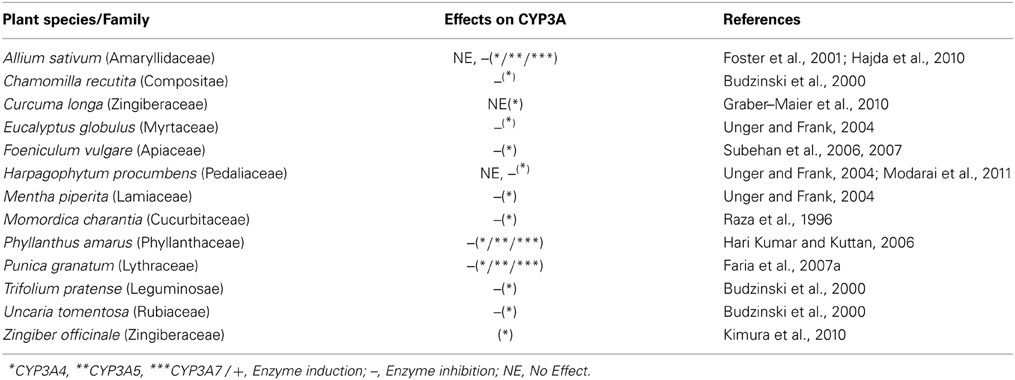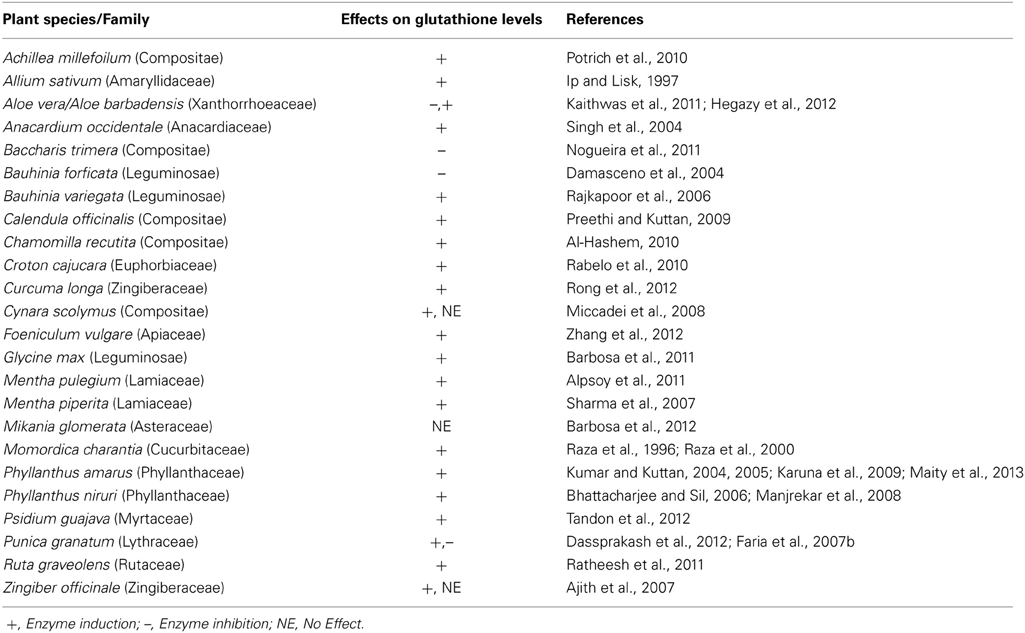Herbal medicines in Brazil: pharmacokinetic profile and potential herb-drug interactions
A corrigendum on
Herbal medicines in Brazil: pharmacokinetic profile and potential herb-drug interactions
by Mazzari, A. L. D. A., and Prieto, J. M. (2014). Front. Pharmacol. 5:162. doi: 10.3389/fphar.2014.00162
We noticed that some symbols were lacking in Table 5 and some of the Plant Family names were not currently accepted.
We hereby present the Tables 1–9 with all symbols and botanical names re-checked.

Table 9. Medicinal plant species listed in RENISUS with reported effects of on P-glycoprotein activity.
Apologies for any inconvenience this may have caused.
Conflict of Interest Statement
The authors declare that the research was conducted in the absence of any commercial or financial relationships that could be construed as a potential conflict of interest.
Keywords: herb-drug interactions, cytochrome P450, glutathione, glucuronidation, P-glycoprotein, polymorphism, Brazil, pharmacovigilance
Citation: Mazzari ALDA and Prieto JM (2015) Corrigendum: Herbal medicines in Brazil: pharmacokinetic profile and potential herb-drug interactions. Front. Pharmacol. 6:23. doi: 10.3389/fphar.2015.00023
Received: 07 November 2014; Accepted: 27 January 2015;
Published online: 10 March 2015.
Edited by:
Adejuwon Adewale Adeneye, Lagos State University College of Medicine, NigeriaReviewed by:
Fang-Rong Chang, Kaohsiung Medical University, TaiwanEleni Skaltsa, National and Kapodistrian University of Athens, Greece
Copyright © 2015 Mazzari and Prieto. This is an open-access article distributed under the terms of the Creative Commons Attribution License (CC BY). The use, distribution or reproduction in other forums is permitted, provided the original author(s) or licensor are credited and that the original publication in this journal is cited, in accordance with accepted academic practice. No use, distribution or reproduction is permitted which does not comply with these terms.
*Correspondence: j.prieto@ucl.ac.uk
 Andre L. D. A. Mazzari
Andre L. D. A. Mazzari Jose M. Prieto
Jose M. Prieto






